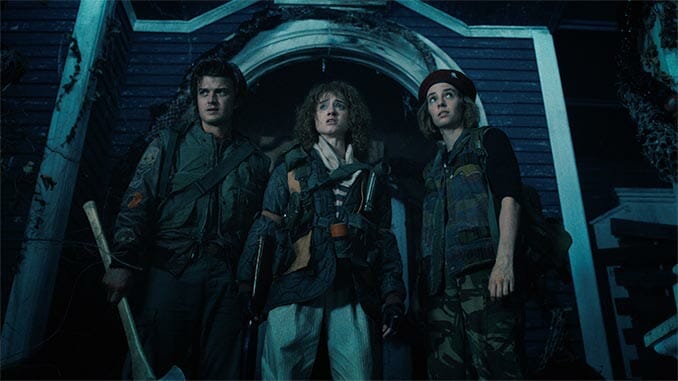Was Stranger Things‘ Two-Plus Hour Season 4 Finale a Good Idea? It Depends
Photo Courtesy of Netflix

Vecna (Jamie Campbell Bower) knew what he was talking about in more ways than one.
As the battle with the big bad of Stranger Things 4 reached its endgame, and the fourth season’s myriad storylines finally coalesced into one thread, Vecna told a super-powered Eleven (Millie Bobby Brown), “This is only the beginning, the beginning of the end.” Sure, he was probably referring to the apocalyptic chaos to come in the real-world version of Hawkins. But he might as well have been talking about the massive season finale itself, as there was almost a regular length episode’s worth of runtime left to come once the battle started wrapping up.
We’d heard for months that the episodes in Season 4 would make the previous run seem brief in comparison, and it did not disappoint on that front. Every episode clocked in at over an hour, with most episodes averaging around 1 hour and 20 minutes in length. But even those seem short in comparison to the season finale, “The Piggyback,” which clocks in at a hefty 2 hours and 22 minutes.
For the sake of comparison, the Season 4 finale is longer than most feature films, including hits like Mad Max: Fury Road, The Social Network, and Looper. To be clear, those aren’t simple movies—and they still told their stories in a shorter span than the latest Stranger Things finale. It pushed past those and came closer to something like a Marvel Studios tentpole. It’s pretty much the same length as the first Avengers film, and mercilessly clocks in just a bit shorter than Avengers: Infinity War.
But the real question is, does it work? Was it worth it to produce a season finale longer than most films? There’s no easy answer, though your mileage will vary based on how much you love Stranger Things and how much you trust the auteur concept when it comes to the craft of TV and filmmaking.
The fourth season of Stranger Things took three years to finally get out in the wild, as the massive production had to grapple not only with the chaos of the COVID-19 pandemic, but also the fact that its core cast is mostly comprised of children—and those young people are prone to grow up quite a lot when viewers haven’t seen them in the three years between seasons. It was also a globe-trotting story that took the action far outside of Hawkins, Indiana, with storylines set in a Russian prison and on the West Coast. Plus, more time than ever was spent in the Upside Down and the twisty, sprawling nightmarescapes dreamed up by Vecna. So, all challenges considered, it overcame a lot and got a lot of things right.
-

-

-

-

-

-

-

-

-

-

-

-

-

-

-

-

-

-

-

-

-

-

-

-

-

-

-

-

-

-

-

-

-

-

-

-

-

-

-

-








































